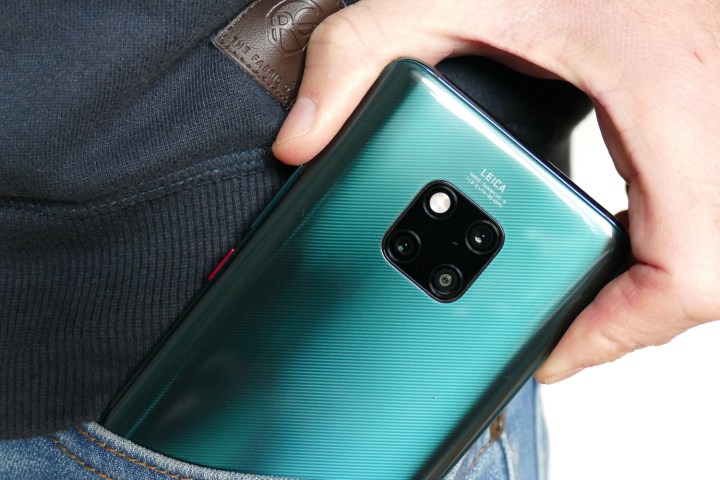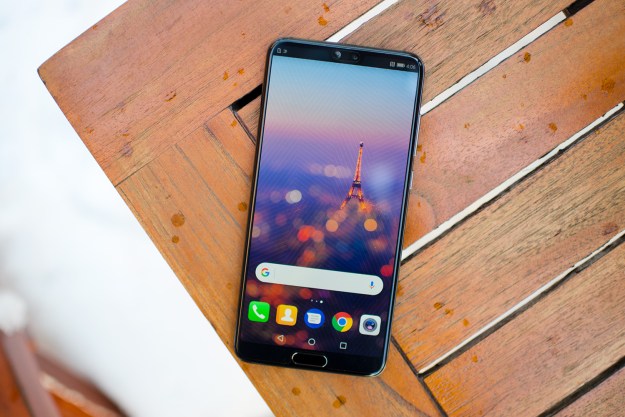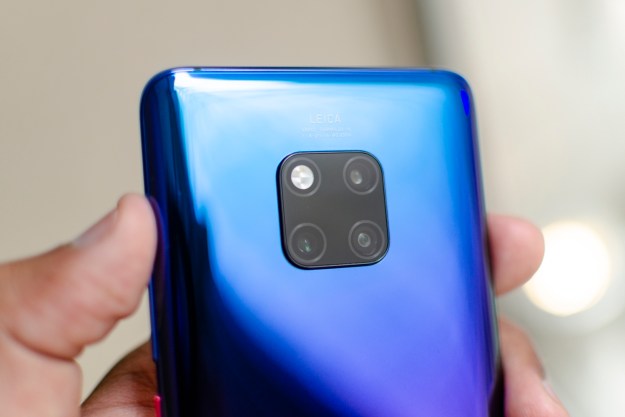
The new Huawei Mate 20 Pro is one of the most feature-packed smartphones available today, which makes it ultra-desirable, and likely to ensure it finds its way into a lot of hands. If that’s you, and a new Mate 20 Pro is nestling in your palm now, then read on, because we’ve got some great tips to help you know your phone just that little bit better. The more you know it, the more you’ll get from it.
Alternatively, if you’re looking for our Huawei Mate 20 Pro review it’s right here, and we have some suggestions for great cases here too. If you’re still making a buying decision, don’t dismiss the standard Mate 20 either, and you can read our review here.
How to activate gesture controls
Huawei has included gesture controls in EMUI 9.0, the user interface over Android 9.0, on the Mate 20 Pro; but they are not active by default. To try them out, open Settings, System, and System Navigation. From here, there are three choices: Gestures, Three-key Navigation, and Navigation Dock.
Select Gestures for Huawei’s own gesture system. The traditional Android buttons will disappear from the bottom of the screen, and you’ll navigate around using an upward swipe for returning home, a swipe at the side of the screen for back, and a swipe up and hold for the open app menu.
The Navigation Dock is a small onscreen dot, where taps and presses also navigate around the phone. It can be used in conjunction with either main control method. To return to the familiar Android keys, follow the same method above and select Three-Key Navigation. However, Huawei’s gesture controls work well on the Mate 20 Pro.
How to get an app tray
This is a common request for Huawei phone users: How do you change the home screen layout from having app icons spread across multiple screens, to a traditional app tray? It’s easy. Open Settings, then Home Screen & Wallpaper, and finally Home Screen Style. Here there are two options, either the standard Huawei setting for apps across Home screens, or the Drawer option. Tap either one to activate.
How to use Digital Balance
This is a new feature for EMUI 9.0, and operates like Google’s Digital Wellbeing system that’s only available on Pixel phones at the moment. It’s a great way to monitor your app and phone usage, and a benefit of Huawei’s app is that it collects data over a longer period of time than Google’s.
Go to Settings and find the Digital Balance option. Open it, and if it’s for the first time you may have to grant it some permissions. From here, you can set up usage limits for apps, set a daily screen time limit, and a bed time mode to grey out the screen after a certain time.
- 1. Activate the Huawei Mate 20 Pro’s Gesture controls.
- 2. Switch from Standard to App Drawer view on the Huawei Mate 20 Pro.
- 3. Examine Huawei’s Digital Balance app on the Mate 20 Pro.
How to use bluetooth with AptX HD
The Huawei Mate 20 Pro does not have a 3.5mm headphone jack, so if you’re planning to buy a pair of Bluetooth headphones for use with the phone, perhaps consider getting a set that supports AptX HD, which gives you higher than CD quality sound from Hi-Res audio files. You need an AptX HD pair of headphones — find them all listed on the AptX website, but we like the Sony WH-1000xM3, and the Audio-Technica ATH-DSR9BT — and then simply pair them with your phone to get the best wireless sound you’ll hear.
How to use Super Macro Mode
One of the reasons to buy the Mate 20 Pro is the awesome camera, which in addition to the new wide-angle lens, also has a special Super Macro Mode. There isn’t a specific setting for this, so it’s helpful to know how to kickstart it when you’re out taking photos. Open the camera app, then tap the zoom settings in the viewfinder to cycle through to the 0.6x wide-angle mode. Now, get in close to your subject — about 2.5cm away, according to Huawei — and wait for the artificial intelligence to realize what you’re taking a picture of, and Super Macro mode will activate. You’ll know because like other scene recognition modes, it’ll display the mode name in the viewfinder.
How to turn off Master A.I.
Huawei has one of the best artificial intelligence (A.I.) systems on any smartphone, and it’s particularly effective in the camera, where it deals with scene recognition and setting adjustment. This can result in some great photos, but you may not always want it interrupting. It’s possible to turn off the A.I. in the camera completely, if you’d prefer to see results without it.
Open the camera app, then tap the cog in the top right of the screen. Look for the Master A.I. setting and toggle it off. Remember that with the Master A.I. disabled, you won’t get any of the auto scene recognition adjustments. To turn it back on, just reverse the process.
How to use 3D Live Maker app
If you watched the Mate 20 Pro launch event, you may recall an amazing feature being demonstrated, where the phone’s camera 3D-scanned a cuddly toy and then using augmented reality, brought it to life on the screen. Not available at launch, this feature is now available for Mate 20 Pro owners, and here’s how to get it.
Open the Huawei App Gallery app, and if it’s not already on the main screen, search for 3D Live Maker. Download and install the 145MB app, then follow the on-screen instructions to start bringing inanimate toys to life. Yes, it needs patience to get it right; but the results are cool when you get the hang of it.
- 1. Turn off the Master AI on the Huawei Mate 20 Pro’s camera.
- 2. Super Macro Mode on the Huawei Mate 20 Pro.
- 3. The 3D Live Maker app for the Huawei Mate 20 Pro
How to use Wireless Reverse Charging
Did you know the Huawei Mate 20 Pro can charge other devices wirelessly? Surprising as it sounds, provided the other device supports the Qi wireless standard, it actually works. However, it’s not a feature that’s always active, so you’ll have to dig into the settings to switch it on.
First, ensure the device you want to charge has wireless charging. The new Apple iPhone XS, XS Max, and Samsung Galaxy Note 9 will all work, for example. On the Mate 20 Pro, open up Settings, then choose the Battery option. Scroll down and look for the Wireless Reverse Charging option, and tap the switch to the right. A graphic will appear showing you how to position the two devices. It’s as easy as putting the two phones together, back-to-back.
How to set Always-on Display
The Mate 20 Pro’s OLED screen supports an always-on display, so you can see the time, battery life, and notifications on the lock screen. This is turned off as standard, so to find it, go to Settings, Home Screen & Wallpaper, and then look for the Always-on Display option at the bottom. Tap it and toggle the switch. While you’re there, you can schedule it so the always-on display doesn’t stay on during the night, where it could be too bright.
How to use Smart Resolution
Out of the box, the Mate 20 Pro will have its Smart Resolution feature active, which lowers the resolution of the screen to help save battery power. If you want to make use of the maximum 3120 x 1440 pixel resolution, you’ll have to override this. Go to Settings, Display, then Screen Resolution. Toggle the Smart Resolution option at the top of the screen, then select WQHD+ from the options underneath. You may want to switch Smart Resolution back on in the future, as not all apps and screens will make use of all the pixels, resulting in a waste of energy.
- 1. Switch on the Huawei Mate 20 Pro’s Always-on Display.
- 2. Turn on Reverse Wireless Charging on the Huawei Mate 20 Pro.
- 3. Adjust the Smart Resolution Settings on the Huawei Mate 20 Pro.
How to gain more notification icon space
A side effect of the Mate 20 Pro’s notch, where the 3D scanning front camera array is contained, is that there isn’t much room for notifications. While there isn’t much you can do about it, there is a way to free up a tiny bit of space. Try these two tips first. Go to Settings, then Display, and finally More Display Settings. Here, deselect the Display Carrier Name and Display Network Speed options.
Next, go back to Settings and to Battery. Tap the cog in the top right, and then Battery Percentage, and choose Do Not Show. Additionally, pull down the notification shade and turn NFC off, then Bluetooth. Yes, several of these are compromises — no NFC means no Google Pay, and you’ll need Bluetooth for headphones or other accessories — but it’s the only way to free up space for notification icons.
Editors' Recommendations
- Best microSD cards in 2023: top picks for your computer, camera, or drone
- Wedge-shaped MateBook X Pro headlines Huawei’s MWC lineup
- Common OnePlus 7 Pro problems, and how to fix them
- The best Huawei P40 Pro cases and covers
- The best iPhone 11, iPhone 11 Pro, and iPhone 11 Pro Max tips and tricks













